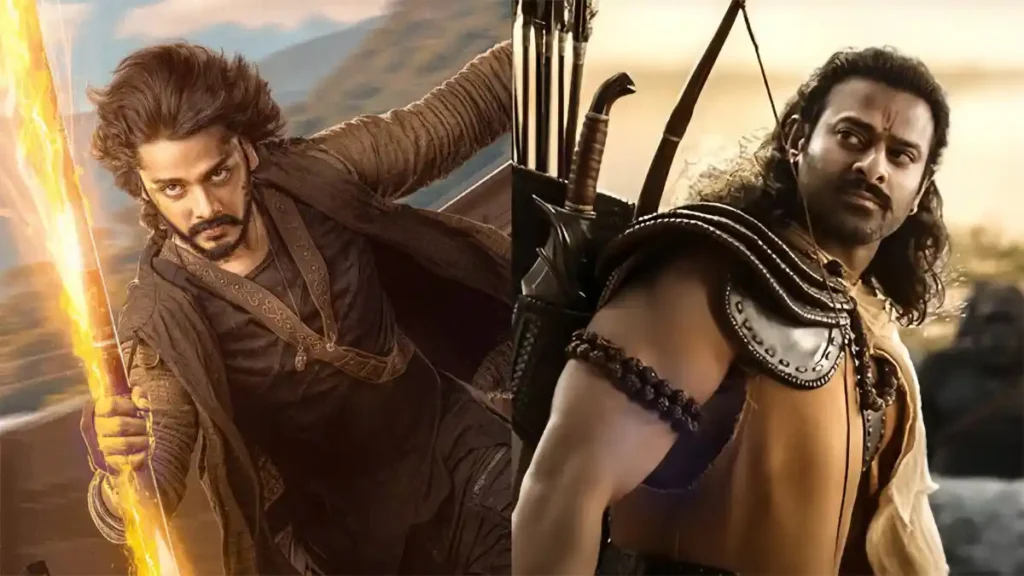Now Reading: Mirai Movie Meaning: Decoding The Name’s Power
-
01
Mirai Movie Meaning: Decoding The Name’s Power
Mirai Movie Meaning: Decoding The Name’s Power

The release of Teja Sajja’s recent Telugu film, Mirai, has garnered significant attention, not just for its mythological action-adventure narrative but also for its title, which it shares with a critically acclaimed Japanese animated film. This intriguing coincidence has led many to question the potential connection between the two and to explore the deeper meaning behind the shared name.
What is Teja Sajja’s Mirai?
Teja Sajja’s Mirai, directed by Karthik Gattamneni, is a high-budget fantasy action film. The plot is rooted in a fascinating mythological premise. It centers on a young man named Vedha Prajapati (played by Teja Sajja), who is the reluctant heir to a sacred destiny. He is tasked with protecting nine grandhas (ancient texts) that hold immense power, left behind by a repentant Emperor Ashoka to prevent further destruction after the Kalinga war.
The film follows Vedha as he navigates a dangerous path to thwart the villainous sorcerer Mahabir Lama, also known as the Black Sword, who seeks to collect the texts and attain god-like immortality. The narrative is a classic battle of good versus evil, blending elements of ancient Indian mythology with modern-day action and visual effects. The film’s title, Mirai, is revealed to be the name of a powerful, ancient weapon once used by Lord Ram, which transforms into the celestial bow Kodanda. This weapon is crucial to Vedha’s journey and his ultimate transformation into a “Super Yodha.”
The Japanese Anime Mirai
The Japanese film Mirai, directed by the celebrated Mamoru Hosoda, is a completely different kind of story. Released in 2018, this anime is a heartwarming and fantastical family drama. It revolves around a four-year-old boy named Kun, who is deeply jealous of his new baby sister, who is also named Mirai, which means “future” in Japanese.
Frustrated by the attention his parents are now giving to the newborn, Kun stumbles upon a magical garden in his backyard. Through this portal, he is transported through time, where he meets various members of his family from the past, present, and future, including his sister, Mirai, as a teenager. The film is a poignant exploration of family bonds, jealousy, and the process of a child learning to accept change and grow into the role of a big brother. The title Mirai is a direct reference to Kun’s baby sister, representing the “future” she embodies for the family.
The Shared Title: A Coincidence with a Deeper Meaning
While the two films are worlds apart in genre, plot, and cultural context, the shared title “Mirai” is more than just a coincidence. In both cases, the word carries a significant thematic weight related to the concept of “future.”
- In the Telugu film, Mirai is the key to the protagonist’s future and, by extension, the future of the world. The weapon is not just a tool for combat; it symbolizes Vedha’s destiny and his transformation from an ordinary man into a protector of humanity. The film’s title, therefore, directly links to the future that Vedha must secure by fulfilling his prophecy. The film is about an ancient legacy and its impact on the present to shape the future.
- In the Japanese anime, the name Mirai is a central pillar of the story’s emotional core. It literally means “future” and represents the new life and the changes that the new baby brings to Kun’s family. Kun’s journey through time is about him understanding his family’s past to be able to embrace his own future as an older brother. The film’s title is a tender and literal representation of the family’s journey into the future, with the new baby at its heart.
In essence, both films utilize the concept of “Mirai” to signify a transformative journey toward a new, and in many ways, an unknown future. The Telugu film uses it in a grand, epic sense of a hero’s destiny, while the Japanese anime employs it in a personal, intimate context of a family’s evolution. The fact that two completely separate cinematic projects chose the same powerful, forward-looking word as their title speaks to the universal appeal and profound meaning of the concept of “future” across different cultures and storytelling traditions.










